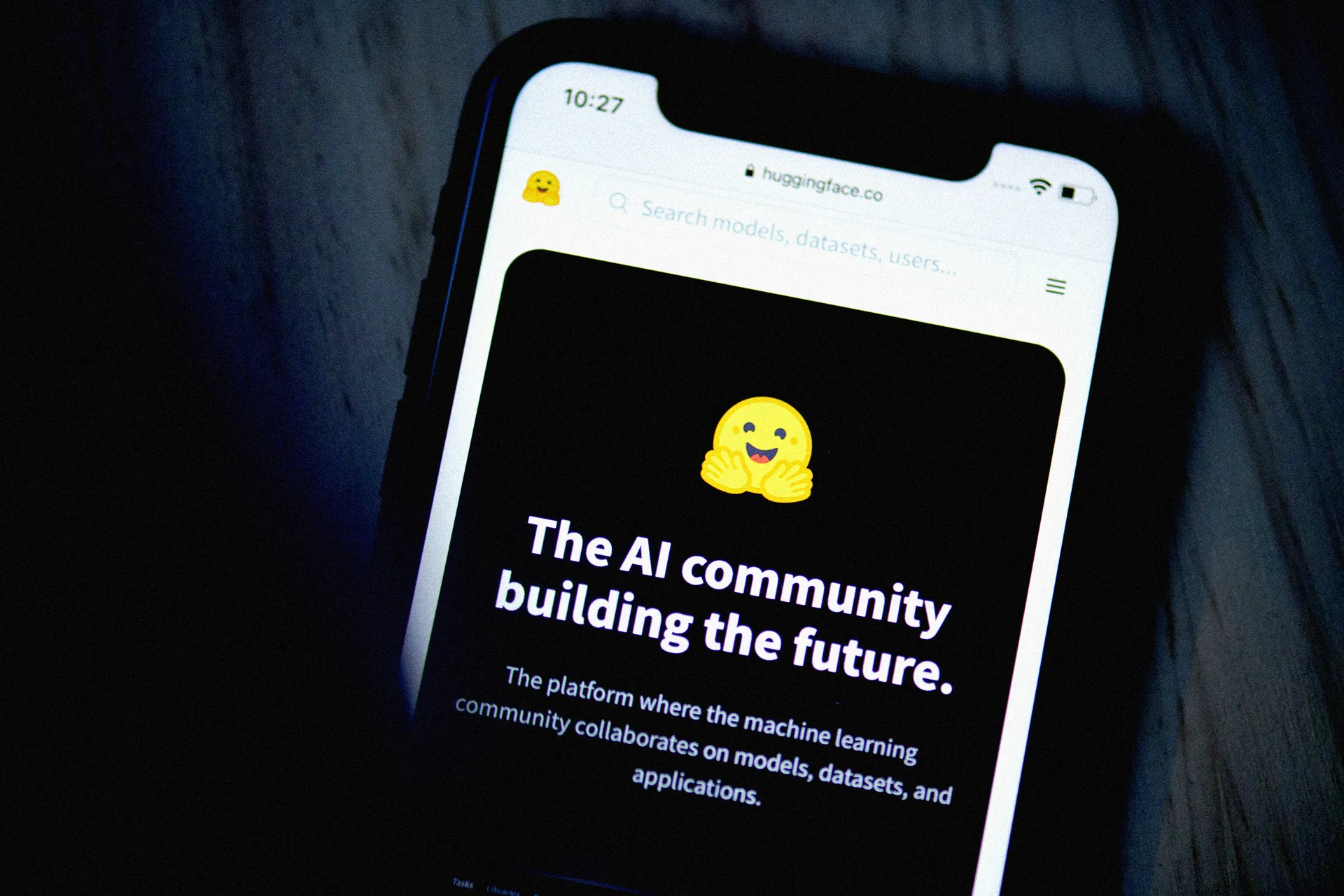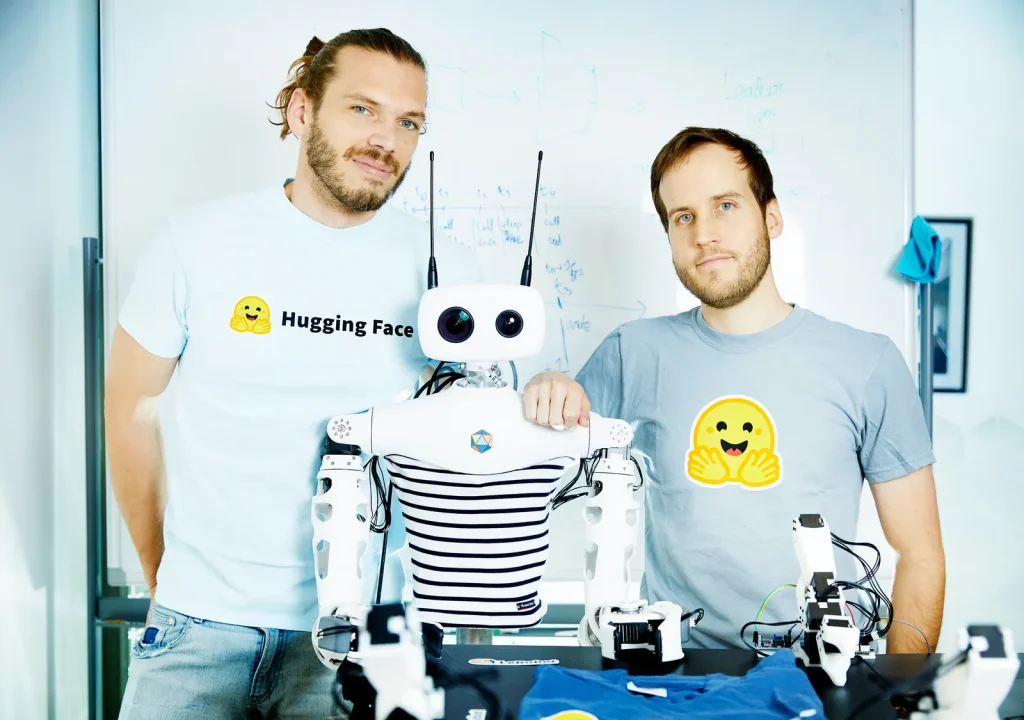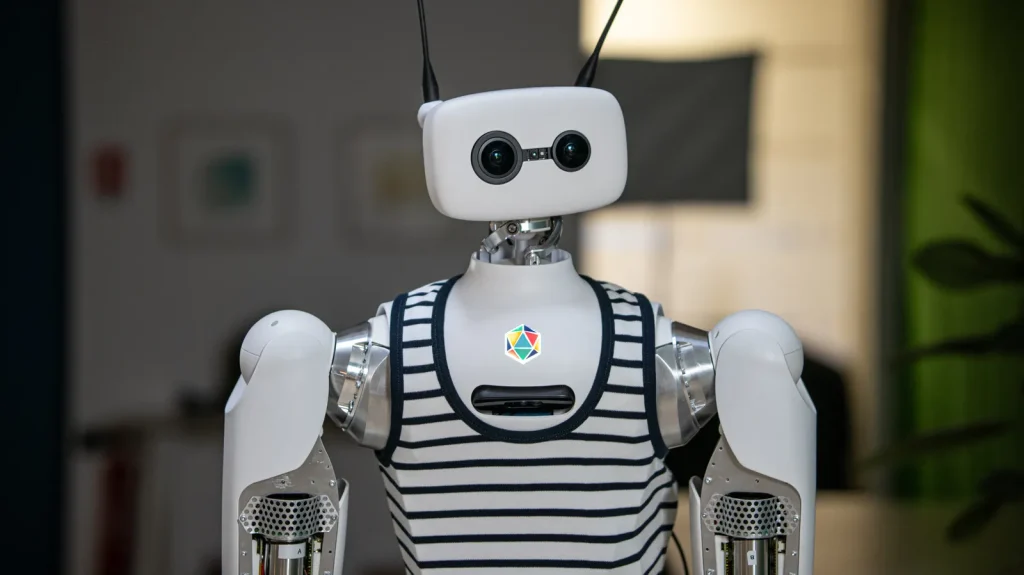Unleash Open Source AI Robots – Pollen Robotics

Hugging Face has acquired the open source robot startup Pollen Robotics to help “democratize” robotics.
Hugging Face, a company that hosts open source artificial intelligence models and software, announced today that it has acquired Pollen Robotics, the French startup behind the bug-eyed, two-armed, humanoid robot called Reachy 2. Hugging Face plans to sell the robot and will also allow developers to download, modify, and suggest improvements to its code.
“It’s really important for robotics to be as open source as possible,” says Clément Delangue, chief executive of Hugging Face. “When you think about physical objects doing physical things at work and at home, the level of trust and transparency I need is much higher than for something I chat with on my laptop.”

In videos shared by Pollen Robotics, Reachy 2 can be seen performing tricks like tidying coffee mugs and picking up fruit. Matthieu Lapeyre, cofounder and CEO of Pollen Robotics, says several leading AI companies are using Reachy 2 to research robotic manipulation, although he says he can’t name them due to confidentiality agreements. The ultimate goal is for people to use descendants of Reachy 2 in their homes.

Lapeyre says selling humanoid robots remains challenging, because the use cases are unclear and the systems are still unreliable—though some companies are starting to find success. Today, the technology is mostly developed by a few well-financed companies, including Tesla, Figure, and Agility Robotics. “With Hugging Face, we hope to democratize that,” he says.
Many AI models, software frameworks, and tools that researchers and engineers rely on to build AI models and applications are already open source. This means the models are shared free of charge, with licenses that allow the code to be modified and reused. Making hardware open source typically means releasing designs, component details, and 3D models that allow pieces to be manufactured more easily.
The availability of powerful open-weight AI models (meaning downloadable but not necessarily fully open source) has made it easier for researchers and startups to experiment with cutting-edge AI, as they can see how models work and modify the code. Delangue says that Hugging Face believes something similar is needed in robotics. “Hopefully open source can unleash a wide and diverse range of [new robot] capabilities,” he says.
Lapeyre adds that open-sourcing hardware has a similar effect. Robot developers “can [3D] print a part if something is broken,” he says, adding, “if something is not perfect, they can make it a bit better by adding a new part.”
The current AI boom has coincided with renewed interest in robotics, as the latest models help enable new advances in the capabilities of hardware systems. Some prominent researchers argue that AI will need a physical presence in order to match or surpass human intelligence, because that advancement may require a direct understanding of the physical world.
The hype surrounding humanoid robots has led to some dubious claims. Some of the companies racing to build humanoid robots have posted demo videos on social media that seem to promise incredible abilities. But experts warn that such videos could be misleading. A system that seems extraordinary online could in fact be tele-operated by a person off camera. It could also fail if conditions change even slightly or be unable to complete a task reliably.
Delangue says the open source approach should make progress more transparent. “You can’t cheat; you can’t hide with open source,” he says.
Hugging Face already hosts some open source robotics code. Delangue says that use of this code has spiked over the past year, reflecting growing interest in robotics generally.
Some robotics researchers, especially those in academia, favor the open approach. “Making robotics more accessible increases the velocity with which technology advances,” says Sergey Levine, an assistant professor at UC Berkeley and cofounder of Physical Intelligence, a startup working to develop vastly more capable and general purpose robotic models.
Physical Intelligence made the first of its robot foundation models, Pi0, available on Hugging Face in February. The model allows a range of different robots to learn to do a variety of physical tasks.
Levine says that researchers in academia and industry have already contributed valuable ideas and tweaks to his product. He adds there is potential for outsiders to contribute to the development of new hardware as well.
“There’s a lot more creativity people can apply to how they build the actual physical hardware,” he says.
The open approach appears to be gaining momentum across the AI industry. Meta was the first major AI company to offer a cutting edge open weight model when it released Llama in 2023. Several other cutting edge open-weight models have followed. In January, a relatively unknown Chinese startup called DeepSeek shocked the tech industry and the stock market by releasing a powerful AI model that was reportedly developed at less cost than those made by US firms.
Even OpenAI, the company at the center of the current boom, which has kept its most powerful models a closely guarded secret, said in March that it would change its approach and release a free, open-weight model this summer.
For Latest results and updates on the go, don’t forget to check out our Telegram channel